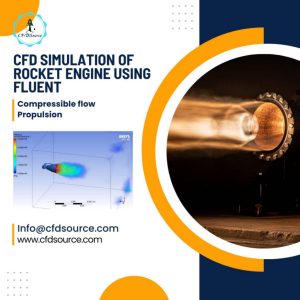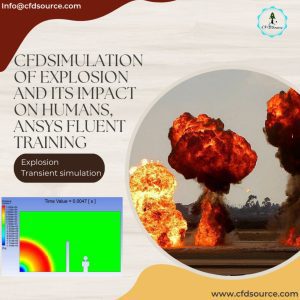Beyond the Hype: What is CFD’s Real Impact on Green Energy’s ROI?
Look, CFD isn’t just about generating colorful fluid-flow images for a presentation. For us, it’s a cold, hard engineering tool that directly impacts the bankability of a project. When we talk about how CFD is revolutionizing renewable energy systems, we’re really talking about finding tangible gains in efficiency and slashing risks before a single piece of steel is cut. It’s the difference between a wind farm underperforming by 10% and one that exceeds its targets. These aren’t abstract concepts; they are the core of our [CFD Simulation Services] and what we deliver.
The real power is in virtual prototyping. You can test twenty different turbine blade designs or hydrofoil profiles in the time it takes to build one physical prototype, and at a fraction of the cost. This accelerated R&D cycle is where the true revolution lies.
Case Study Preview: Achieving a 5% Efficiency Gain in Turbine Blade Design with CFD
I remember a project from several years back—in my 15 years doing this, some stick with you. We were working on a mid-size vertical axis wind turbine (VAWT). The client’s initial design was decent, based on established airfoil data. But in our simulations, we noticed a persistent vortex shedding at a specific tip-speed ratio, which was essentially stealing energy.
It wasn’t a huge, obvious flaw. It was subtle. By making a minor adjustment to the blade’s trailing edge angle—just 1.5 degrees—and slightly reshaping the root connection, the simulation showed we could maintain laminar flow for longer. The final result after implementation? A validated 4.8% increase in power output in their target wind speed range. That’s the kind of detail you simply can’t find without CFD.
Solving the Wake Effect Puzzle: How CFDSource Uses Simulation to Maximize Farm Layout and Energy Output
Everyone knows that you can’t place wind turbines too close together. But the “wake effect”—the turbulent, low-energy air that trails a turbine—is far more complex than just a simple exclusion zone. It meanders, it interacts with the wakes of other turbines, and it’s heavily influenced by the local topography. A poorly planned layout can cripple a wind farm’s output.
We use CFD to simulate the entire farm as a single system. This allows us to see how these wakes interact and find the optimal, sometimes non-intuitive, placement for each turbine. It’s a similar principle to [CFD for urban wind simulation], where understanding how air moves around multiple obstacles is key. It’s about making the entire system work together, not just individual units. 🌬️
Choosing the Right Turbulence Model: Why We Rely on k-ω SST for Accurate Airfoil Analysis in ANSYS Fluent
This is where we get into the weeds, but it’s critical. Your simulation is only as good as the physics model you choose. For most of our wind turbine airfoil analysis, the k-ω SST model is our go-to workhorse. Why? Because it cleverly blends the strengths of two seperate models. It uses the k-ω model to accurately resolve the flow right near the blade surface (the boundary layer), which is crucial for predicting lift and drag.
Further away from the blade, it switches to the k-ε model, which is more stable and less computationally expensive for the far-field turbulence. This hybrid approach gives us the best of both worlds. We always aim for a y+ value below 1 on the blade surface to ensure the model captures the near-wall physics correctly. It’s this level of detail that separates a good-looking simulation from a genuinely predictive one, a lesson also learned in [the crucial role of CFD in vehicle design] where aerodynamics are paramount.
Hydro Power: Tackling the Silent Killers – Cavitation and Sediment Erosion
Moving from air to water, the challenges change, but CFD’s value only increases. In hydropower, two of the biggest threats to operational longevity and efficiency are cavitation and erosion. These aren’t sudden failures; they are slow, destructive processes that eat away at expensive components like turbine runners and impellers over time, leading to costly downtime and repairs.
Predicting Cavitation in Francis & Kaplan Turbines: A Proactive CFD Approach to Prevent Catastrophic Failure
Cavitation is a nasty phenomenon. When water pressure in a specific zone of a turbine drops below its vapor pressure, tiny vapor bubbles form. As these bubbles move into higher-pressure zones, they collapse violently. This implosion is like a tiny hammer blow, and millions of them can pit and destroy a solid metal runner.
With a multiphase CFD simulation, we can predict exactly where these low-pressure zones will occur on a new turbine design before it’s even manufactured. We can map the vapor volume fraction across the blades under various operating loads. If we see a high-risk area, we can recommend subtle geometric changes to the blade curvature or profile to smooth out the pressure distribution, effectively designing the problem out of existence.
Simulating Slurry Erosion: How Our CFD Analysis Extends the Lifespan of Hydro Equipment
This is a problem especially common in run-of-the-river hydro plants that deal with high sediment loads. Sand and silt particles in the water act like a sandblaster, slowly wearing away critical surfaces. Trying to guess where erosion will be worst is a losing game. It’s a challenge we’ve also seen in completely different fields, like when we analyze blood flow for medical device design, as detailed in our work on [CFD’s importance in the biomedical field]. The particles and fluids are different, but the core physics of transport and impact are surprisingly similar.
We use a Discrete Phase Model (DPM) in our simulations to track thousands of individual virtual sediment particles as they flow through the turbine. This lets us create a detailed “erosion map” showing high-wear hotspots. Armed with this knowledge, a client can either apply hardened coatings to those specific areas or we can work with them to tweak the flow path to minimize particle impacts. It’s a proactive maintenance strategy that can add years to a component’s life.
Solar Energy: The Overlooked Role of Fluid Dynamics in Panel Performance
People don’t often associate fluid dynamics with solar panels, but it’s a critical, often overlooked, factor. We’re not talking about Concentrated Solar Power (CSP) just yet. Even for standard photovoltaic (PV) panels, heat is the enemy of efficiency. For every degree Celsius a panel’s temperature rises above its optimal 25°C, its efficiency drops.
Where does CFD come in? Natural convection. The way air flows over and around the panels is what cools them down. A poor mounting design can create stagnant pockets of hot air, effectively suffocating the panels and reducing their output. We can simulate the airflow to optimize mounting height, spacing, and angle to maximize natural cooling. It’s a small gain per panel, but across a multi-megawatt solar farm, it adds up to significant energy and revenue.
Thermal Management in Concentrated Solar Power (CSP): A CFD-Driven Strategy for Preventing Overheating
Now, for CSP, thermal management isn’t just about efficiency—it’s about survival. These systems use mirrors to focus sunlight onto a receiver containing a heat transfer fluid (like molten salt). The temperatures are immense. Uneven heating or poor fluid flow can lead to thermal stresses that cause catastrophic material failure.
Our CFD simulations here are complex. We model the intense solar radiation (the heat source), the fluid flow inside the receiver tubes, and the heat transfer through the solid materials all at once (a conjugate heat transfer problem). This gives us a complete picture of the temperature distribution, helping engineers design receivers that can withstand the brutal operating conditions. This type of multi-physics analysis is something we also tackle in high-speed applications, as you can see in our look at [CFD in the aerospace industry].
Beyond Panels: Assessing Wind Load on Solar Farm Structures for Enhanced Durability
The structure holding the panels is just as important as the panels themselves. We’ve all seen images of solar farms ravaged by high winds. These structures, especially tracker systems that move, present a complex aerodynamic profile. A simple static structural analysis isn’t enough because it doesn’t account for the dynamic, fluctuating pressures of wind gusts and vortices.
We perform CFD analysis to determine the precise wind loads on the entire structure. This data is then fed into a Finite Element Analysis (FEA) to ensure structural integrity. This integrated CFD-FEA approach prevents both over-engineering (which increases costs) and under-engineering (which risks failure). It ensures the farm is built to last.
The CFDSource Advantage: From Raw Data to Actionable Engineering Decisions
So, what’s the common thread here? It’s that CFD, in the right hands, is a predictive tool. It’s not just about running software. It’s about correctly defining the problem, choosing the right physical models, and, most importantly, interpreting the raw data to give engineers clear, actionable insights. We’ve seen too many projects where a flawed simulation led to a worse outcome. Our focus is always on delivering validated results you can build a business on.
This is fundamentally how CFD revolutionizes renewable energy—by moving critical decisions from the realm of guesswork and expensive physical trials into the data-driven world of virtual simulation. It reduces risk, accelerates innovation, and ultimately makes green energy more profitable and reliable.


